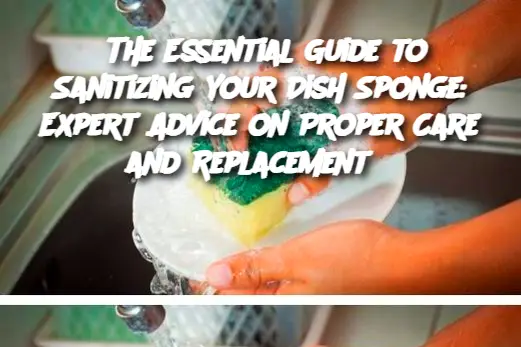ADVERTISEMENT
Dry Your Sponge Properly: After cleaning, always wring out excess water and leave the sponge in an open area to dry completely. Damp sponges are more likely to harbor bacteria.
Rotate Sponges Regularly: If you use multiple sponges, rotate them to ensure even wear and reduce the risk of bacteria buildup.
Store Sponges in a Dry Area: Avoid storing wet sponges in sealed containers or places that remain damp for long periods, as this encourages bacterial growth.
Replace Sponges Periodically: Even with regular cleaning, it's essential to replace your dish sponge every 2-4 weeks, or sooner if it starts to smell, fray, or shows signs of mold.
Variants:
Eco-Friendly Sponge Alternatives:
Consider using natural sponges made from plant fibers like cellulose, which tend to harbor fewer germs compared to synthetic sponges.
You can also use reusable silicone sponges, which are easy to clean and can be sanitized in the dishwasher.
Dish Cloths or Scrubbers:
If you’re looking for a more sustainable option, consider switching to dishcloths or scrubbers made from natural materials like cotton or hemp. These alternatives are machine washable and can last longer than traditional sponges.
FAQ:
How often should I replace my dish sponge?
It’s recommended to replace your dish sponge every 2-4 weeks. If it starts to smell, fray, or shows signs of mold, replace it immediately.
Can I use dish soap to sanitize my sponge?
While dish soap will clean your sponge, it does not sanitize it. To kill bacteria, you will need to use heat, bleach, or disinfecting agents like vinegar or hydrogen peroxide.
Is microwaving the sponge safe?
Yes, microwaving a wet sponge for 1-2 minutes is generally safe and effective in killing germs. However, make sure the sponge is thoroughly wet before microwaving to prevent it from catching fire.
Can I reuse the bleach solution for sanitizing my sponge?
It’s best to prepare a fresh bleach solution each time to ensure maximum effectiveness in sanitizing your sponge.
Can I sanitize my sponge too often?
While frequent sanitizing is important, over-sanitizing can wear out your sponge faster. Regular cleaning methods should be balanced with periodic replacements to maintain both cleanliness and sponge longevity.
By following these expert guidelines for sanitizing and maintaining your dish sponge, you can keep your kitchen cleaner and safer for food preparation. Regular care and timely replacement are key to preventing the spread of harmful bacteria and ensuring a hygienic environment in your home.
ADVERTISEMENT
